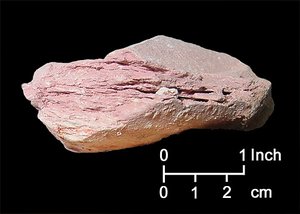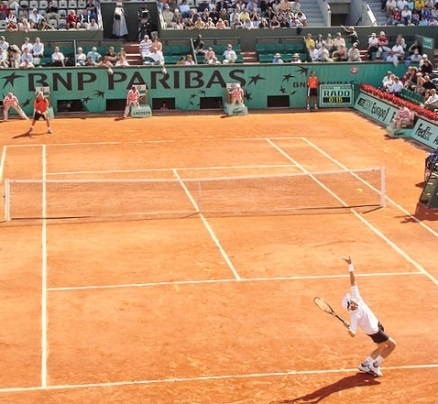Clay sports surfaces
| Topics: |
Geology (main)
|
 Common clay. (Source: Florida Department of Environmental Protection)
Common clay. (Source: Florida Department of Environmental Protection) Clay sports surfaces are utilized throughout the world in a variety of athletic activities. Clay is used on baseball and softball fields in base paths, batter’s boxes, bullpens, pitcher’s mounds, and practice areas. Also, clay and clay composites are used on boccie courts, tennis courts, horseshoe pits, track-and-field event areas, and on horse racing tracks and bridle paths.
Clay, by itself, is not necessarily an ideal surface for sports play. In the early days of baseball, for example, the clay infield would become virtually as hard as concrete in summer heat—and become a slippery quagmire after a rain storm. Without constant care, deep ruts would form in base paths, in the batter’s box, and on the pitcher’s mound in the sport of baseball.
A better clay surface is made up not just of clay, but of a mixture of clay, sand, and silt; the mixture can be screened and blended to optimize its performance. When first introduced, this clay/sand/silt mixture represented a vast improvement over the older solid clay surfaces used on playing fields and tracks, although it still tends to form ruts and can become slick when wet. This mixture is the most popular clay topping in use today.
Another improvement in the evolution of athletic field clay is use of calcined clay—that is, clay that has been heated in a furnace at about 2,000 degrees Fahrenheit. Once calcined, the clay is ground into a powder that absorbs water readily, reduces soil compaction, and will not stick to cleats or hooves. This type of product is used as an infield conditioner and to dry wet spots on a field or track quickly. Flakes of the mineral vermiculite that have gone through the process of exfoliation—a rapid heating process similar to the one for calcined clay (and frequently sold under the more common name, “kitty litter”)—may also be used to dry wet spots quickly.
On the best athletic playing fields, a clay composite product is used. This product is made of clay and polymer layers that are formed around individual grains of sand. Also, vermiculite may be added as a soil conditioner. The resulting material is nonabrasive, compacts easily, does not stick to cleats or hooves, and dries fast. It is often used in heavy-wear areas.
Further Reading
- USGS, 2006. Minerals Statistics and Information. United States Geological Survey.
- American Chemical Society. The Composition of Clay Chemistry.org
| Disclaimer: The U.S. Geological Survey is the original source for some content in the Encyclopedia of Earth. The U.S. Geological Survey is listed as a content source on each article that uses such content. Topic editors and authors for the Encyclopedia of Earth have edited this content and added new information. The use of information from the U.S. Geological Survey should not be construed as support for or endorsement by that organization for any new information added by Encyclopedia of Earth personnel, or for any editing of the original content. |
